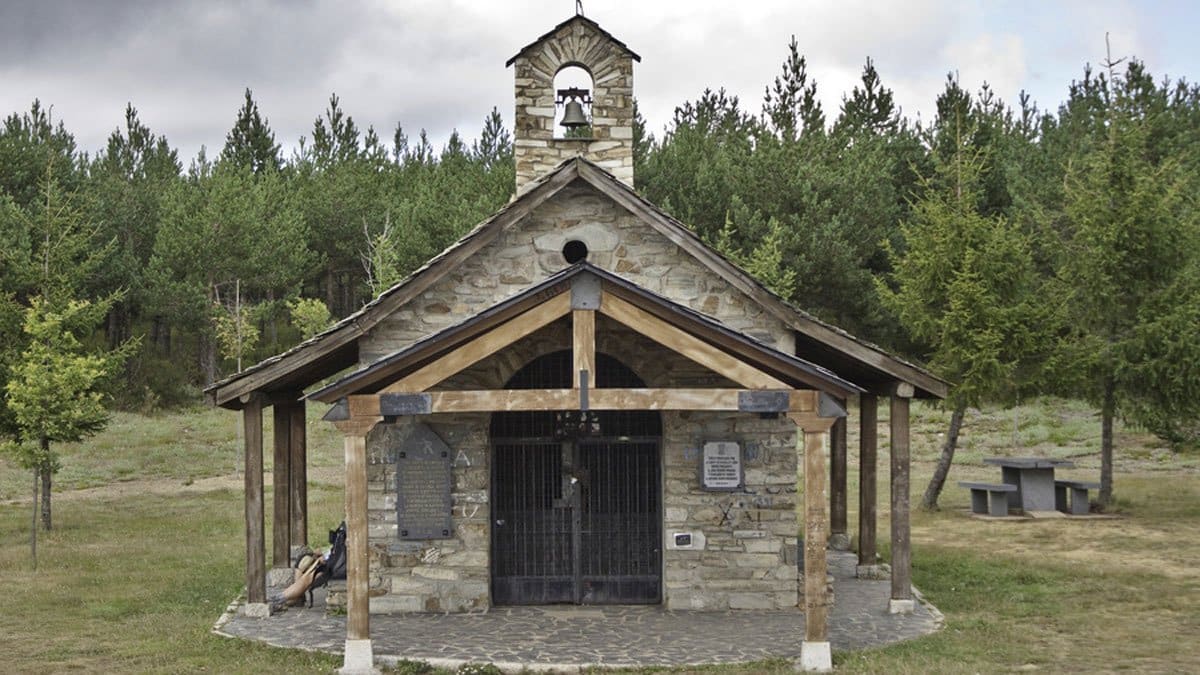La Iron cross o Cruz de Hierro, is one of the most significant and emblematic elements that the French Camino de Santiago.
Índice de contenidos
WHAT IS THE FERRO CROSS?
It is a wooden post about 5 meters high crowned by an iron cross, a replica of the original preserved in the Museum of the Roads of Astorga, nestled on a stone “humilladero” at the foot of said Cross.
WHERE IS IT?
It is located in a place surrounded by extraordinary beauty, located in the province of León (between the regions of Maragateria and El Bierzo), 1 kilometer away. from the town of Foncebadón, in the vicinity of Monte Irago, at a altitude of 1504 meters – highest pet on the French Way –
The humiliators were located in the Caminos, obligatory places of passage and emblematic sites, with different purposes, to be indicated, “thanksgiving”, “altars” “marking places with difficult orientation, such as mountain passes”, and ” crossroads ”.
ORIGIN
Over the years, it is believed that it was already used for some of these purposes by Celtic peoples and the Romans who dedicated an altar to the God Mercury – protector of travelers-, depositing small stones at the foot of it.
Later, once the territory was Christianized, the hermit monk Gaucelmo (XNUMXth and XNUMXth centuries), who founded a pilgrims’ hospital in Foncebadón to care for pilgrims heading to Santiago, apparently placed a post with a cross at the end of the same as signaling medium and orientation, given the harsh weather conditions in the area in winter. Remember that if you do the Camino de Santiago organized from Sarria You will be able to see an infinite number of signs that will guide you: you saw, milestones, crosses, etc. There is no cross as impressive as the Cruz de Ferro, but you will surely not get lost on your walk.

TRADITION WHEN YOU ARRIVE AT THE CRUZ DE FERRO
Almost obligatory crossing point of the Camino de Santiago from León, already mentioned in the Calixtino Codex, the pilgrims who passed through this place had the custom of throw, with his back to the cross, a stone brought from its place of origin as a symbol of leaving behind its sins or its heavy burden, which meant a liberation or request for forgiveness, as well as “the beginning of a new life”, a tradition that continues to this day , for the thousands of pilgrims who, likewise, leave their requests, well written or in photographs, as well as numerous memories at the foot of this Cross and humiliation.
Likewise, the Galician reapers, in the XNUMXth and XNUMXth centuries, as they passed through this point in the direction of Castile, continued with the same tradition.
CHAPEL OF SANTIAGO
Next to the Cruz de Ferro, is the Ermita De Santiago, erected in 1982. It is a chapel consecrated to Santiago Apóstol next to the famous iron cross.
The Galician Center of Ponferrada celebrates the festivity of Santiago “July 25” with a pilgrimage that is very popular in the region. Mundiplus trips like company for the Camino de SantiagoWe like to attend and participate in these parties in a private capacity. We like these types of traditions and that they continue to be perpetuated over the years.









